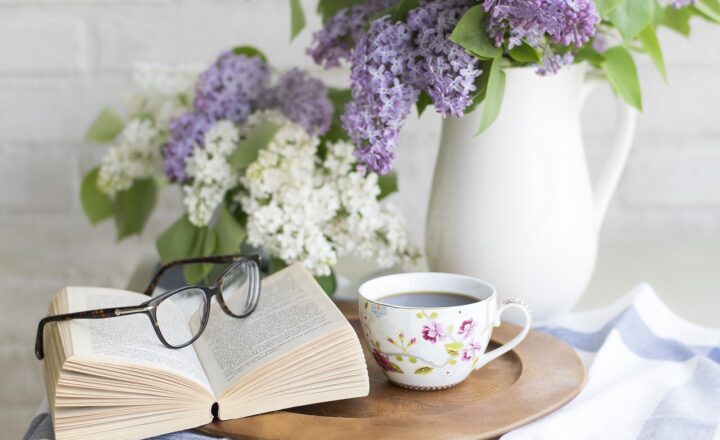The Art of Curating Your Collection: How to Decide What Items to Keep and Display
November 13, 2024

Curating a personal collection is more than just accumulating items; it’s an art form that involves a thoughtful process of selection, organization, and display. Whether you’re an avid collector of books, art, antiques, or fashion, making decisions about what to keep and how to showcase your treasures can bring immense satisfaction and enhance your living space. In this article, we’ll explore the principles of curation, practical tips for making decisions, and creative ways to display your collection.
1. Understanding the Importance of Curation
Curation goes beyond just storing items in a box or on a shelf; it is an intentional practice aimed at telling a story and evoking emotion. A well-curated collection can:
- Showcase your personality and interests
- Spark conversations and share histories
- Add aesthetic value to your space
- Preserve memories and moments in time
When you curate your collection, you are effectively translating the essence of what those items mean to you and how they reflect your journey.
2. Defining Your Curation Criteria
Before diving into your collection, it’s essential to establish criteria for what makes an item worthy of inclusion. Consider the following factors:
- Emotional Connection: Does this item evoke positive memories or feelings?
- Rarity and Uniqueness: Is the item rare or one-of-a-kind, making it special in your eyes?
- Aesthetic Appeal: Does the item hold beauty or craftsmanship that you appreciate?
- Historical Significance: Does the piece carry history or represent a meaningful event or era?
- Condition and Usability: Is the item in good condition, and can it continue to serve its purpose?
By developing clear criteria, you’ll simplify the decision-making process and ensure that every item in your collection resonates with you.
3. Practical Steps for Collection Decisions
To create your curated collection, follow these practical steps:
Step 1: Inventory Your Items
Start by taking stock of what you currently have. Create a list or a digital catalog that includes details about each item like its origin, significance, and condition.
Step 2: Evaluate Each Item Against Your Criteria
Go through each item and assess it according to your established curation criteria. Ask yourself:
- Does this item deserve a place in my curated collection?
- What emotional memories does this item carry?
- Has its value (material or sentimental) changed over time?
Remember that it’s okay to part with items that no longer serve a purpose, have lost their sentimental value, or simply don’t fit your collection’s theme.
Step 3: Create a Selection Process
Establish a method for selecting which items to keep. You might consider:
- The “three box method”: Keep, Donate/Sell, and Trash.
- The “golden rule”: If you can find a new item you’d like to add, you must part with one item from your collection.
- Time-based evaluation: Set aside a collection for a defined period and reassess your attachment to those items afterwards.
Following these steps will help you narrow down your collection to only the most important items that truly resonate with you.
4. Creative Ways to Display Your Collection
Once you’ve created a curated collection, it’s time to showcase your items in an eye-catching way. Here are some creative ideas to consider:
Wall Displays
– Use frames, shadow boxes, or floating shelves to present items like artwork, collectibles, or memorabilia.
Display Cases
– Consider vintage cabinets or display cases that protect delicate items while allowing full view access.
Thematic Grouping
– Group items based on themes, colors, or styles to create cohesive displays that tell a specific story.
Interactive Spaces
– Create spaces where visitors can interact with your collection, such as a small gallery or nook with informational labels and cards.
Using creativity to display your collection can enhance its overall impact and invite appreciation from others.
5. Maintaining Your Curated Collection
A curated collection is not a one-time effort. Here are some ongoing practices to keep your collection in top shape:
- Regularly Reassess: Go through your collection annually to make sure the items still align with your criteria and emotional connections.
- Maintain Condition: Ensure your items are preserved properly: clean them, use appropriate storage solutions, and display them in ways that minimize damage.
- Be Open to Change: As your tastes evolve, so should your collection. It’s okay to let go of items that no longer resonate with you and introduce new pieces that excite you.
This ongoing effort ensures your curated collection remains fresh and meaningful over time.
Conclusion
Curating your collection can be a deeply satisfying process, allowing you to create an expression of your interests, memories, and aesthetics. By defining your criteria, following practical steps for evaluation, and showcasing your collection creatively, you can transform your items into a meaningful and beautiful display. Whether you’re an experienced collector or just beginning your journey, remember that the art of curation is a personal and evolving experience that ultimately reflects who you are.
Embrace the journey of curation; it’s not just about what you keep, but how it enriches your life and your surroundings.






